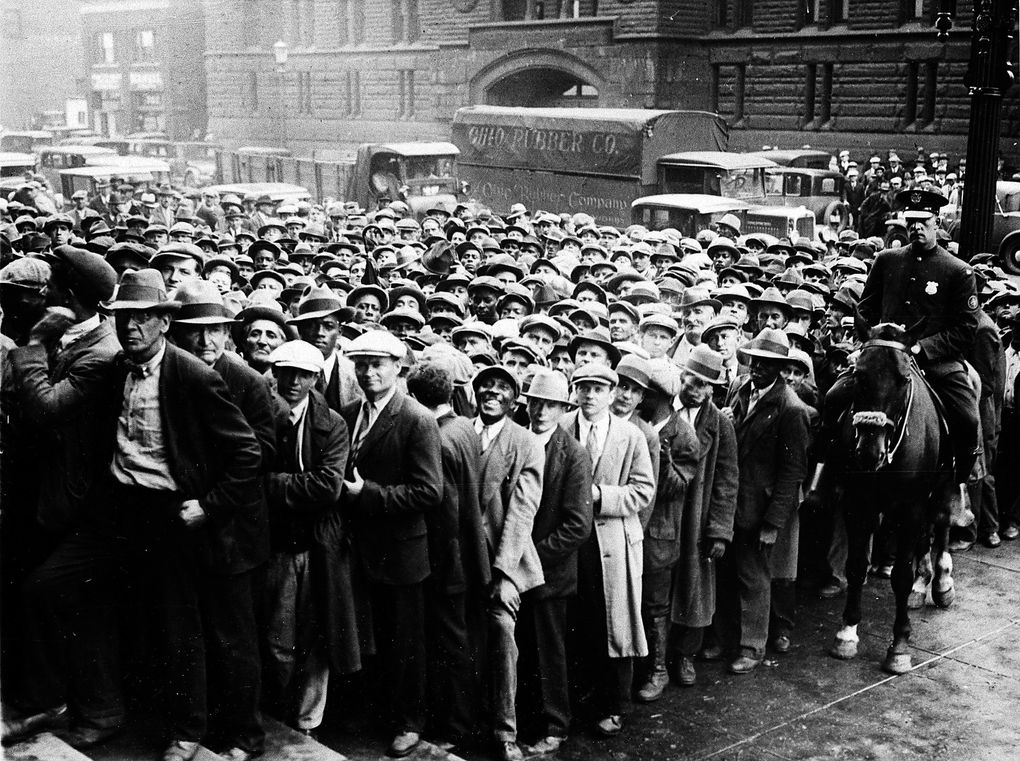Made me think about Rambus and rhymes…….
“The banking system was rickety. Some 8,000 banks were members of the Federal Reserve System, but twice that many were not. Even some of their reserves were fictitious.”
The Depression shattered and changed America — now history may rhyme
June 19, 2020 at 6:01 am
We’ve seen some scary numbers lately, especially on unemployment. Even with the recent rebound for retail sales, the picture remains the worst since modern federal records began in 1948.
Or since the Great Depression.
Last month Federal Reserve Gov. Lael Brainard explained our situation this way: “Last year, national unemployment had fallen to its lowest point in over five decades. Today, unemployment has surged to levels not seen since the Great Depression.”
All this makes it important to examine an event whose origins and cures remain debated. What’s not debated: It was the worst economic collapse of modern times, with world-shaking consequences.
The Depression is often seen beginning with the stock market crash of October 1929. The biggest reasons: overvalued stocks, speculator fraud and over-reliance on purchasing shares on margin (buying on credit, which depends on prices going up).
Yet trouble was gathering before the crash.
The banking system was rickety. Some 8,000 banks were members of the Federal Reserve System, but twice that many were not. Even some of their reserves were fictitious.
Some scholars claim the economy was recovering from the stock collapse when bank panics took it down. Between 1929 and 1933, 7,000 banks failed.
Faced with these problems in 1930, the Federal Reserve made a disastrous blunder, tightening the money supply and failing to act as lender of last resort to key banks.
Economists Milton Friedman and Anna Schwartz made this case so convincingly that future Fed Chairman Ben Bernanke in 2002 apologized for the central bank’s failure. The occasion was Friedman’s 90th birthday and Bernanke said, “Regarding the Great Depression. You’re right, we did it. We’re very sorry. But thanks to you, we won’t do it again.”
The Fed — and much of the developed world — was constrained by the gold standard, which connected money to the precious metal.
Yet another lever down the mountainside was the Smoot-Hawley Tariff of 1930. Intended to protect American jobs, the act backfired spectacularly.
All told, a severe contraction was driven to become the Great Depression. From 1929 to 1933, gross national product fell by one third, the stock market lost 80% of its value and unemployment hit 25%. Severe deflation set in.
In his memoirs, Hoover quoted Treasury Secretary Andrew Mellon, chief architect of the laissez-faire 1920s policies, as saying, “Liquidate labor, liquidate stocks, liquidate the farmers, liquidate real estate. Purge the rottenness out of the system.”
Hoover didn’t agree. A Theodore Roosevelt Progressive, Hoover made his reputation coordinating aid to millions during and after World War I. At the punitive Versailles talks that forced Germany to accept sole blame for the conflict, John Maynard Keynes said Hoover was the only participant who “emerged from the ordeal of Paris with an enhanced reputation.”
The Depression destroyed his reputation, with homeless camps named “Hoovervilles” — including in Seattle.
But contrary to the hagiography of Franklin Delano Roosevelt, who followed Hoover and generally gets credit for rescuing the nation from the Depression, Hoover expanded the federal government — more extensively than any peacetime president up to that time — to address the crisis. Federal spending on public works rose, as did lending to farmers and businesses. Hoover’s Reconstruction Finance Corp. continued successfully in the New Deal.
His successor, FDR, was also a budget balancer at heart. However, with “a second-class intellect but a first-class temperament,” as Oliver Wendell Holmes put it, Roosevelt was willing to experiment. Surrounded by his “brains trust” of experts, he embarked on the New Deal.
This vast series of programs included a “bank holiday” that closed insolvent institutions, passed federal deposit insurance, separated investment banks from commercial ones (Glass-Steagall) and took America off the gold standard.


Who wrote this misinformed drivel?
Andrew Mellon Chief architect of the Laissze-faire 20’s…. That’s what they would like you to believe. How about instead Ben Strong NY Fed chair chief money printer who injected his “Coup de Whiskey” into the stock market to help out the screw-up committed byWinston Churchill in wrongly setting the pounds rate to gold.
Or Bernank saying We did it we were guilty for NOT printing enough money….
Jeesh
Jon Talton.
Sorry Plunger, I’m not a history buff on this. But I thought some of the remarks about the banking system and it’s issues were relevant?
Thanks for pointing out the inaccuracies!
Plunger-what’s your game plan for re-entry into your larger positions?
1. Dismantle the Fed. Establish Central Bank under Government Treasury.
2. Put money/currency issuance back into the hands of the elected Government Treasury.
3. Private banks cannot use deposit funds for any other activities apart from lending.